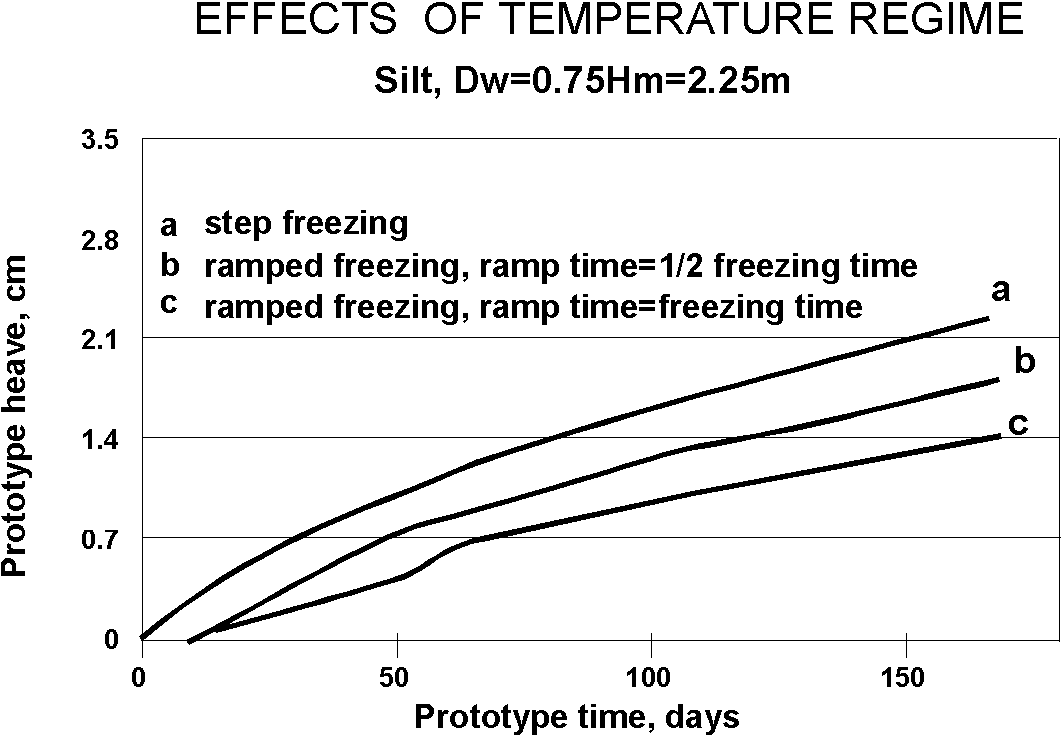
6.20 Cold regions' engineering
Frozen Soils
Frost heave was successfully simulated at the University of Maryland (Yang and Goodings 1996). It involved a 3m high column of silt and silty clay modeled 170 days of freezing with two ground water configurations, at scales of 1:20, 1:30 and 1:45.

Ice characterization
An experimental program was carried out at C-CORE to better understand the effects of inertial acceleration on the physical (crystal structure, salinity, density) and mechanical properties of floating sheets of non-saline and saline ice (Barrette et al. 1998a,b).
Iceberg scour
Pipelines below iceberg-infested waters are susceptible to scour-induced damage. A series of 20 scour events were conducted at an acceleration of 150g to model this phenomenon (Hynes et al. 1995).
Barrette, P.D., Phillips, R., Clark, J.I. and Crocker, G., and Jones S.J. (1998a): Physical properties of columnar ice grown in a centrifuge, Proc. 7th ISOPE, Montreal, Canada, pp. 519-525.
Barrette, P.D., Phillips, R., Clark, J.I. and Crocker, G., and Jones, S.J. (1998b): Mechanical testing of floating ice sheets, Proc. of CENTRIFUGE 98, in press.
Hynes, F., Xiao, X. and Meany, R. (1995): The use of centrifuge modelling in iceberg/seabed interaction research, Geotechnical News 13, pp. 31-32.
Yang, D., and Goodings, D.J., (1996): Centrifuge modelling of frozen soil effects, Geotechnical News, 14, pp. 34-36.
|
|
| ||